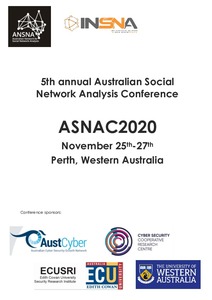Migration and knowledge networks in peripheral farming villages in Sumatra Indonesia (Abstract: the 5th annual Australian Social Network Analysis Conference 2020)
Ayu Pratiwi; Petr Matous; Kirsten Martinus
https://urn.fi/URN:NBN:fi-fe2021042825083
Tiivistelmä
The migration of people from core areas of the world to the peripheries is a long-established subject of research enquiry, with one particular focus being the study on transmigration. Transmigrations often occur via government-supported programs intended for redistribution of resources and solving the uneven socio-economic development. However, there is still limited understanding on how transmigrants structurally position themselves in community knowledge networks and on their roles in shaping the information networks in the context of agriculture-dominated rural peripheries. This paper examines how transmigrants from the national cores manage to shape their communities’ social structures in the rural peripheries. We study the extent of migration experience between Java (the political centre of Indonesia) and a peripheral area on an “outer island” (Sumatra) that influenced the composition of the majority and minority ethnic groups, and examine whether their majority/minority status in their respective communities determines the degree of influence in the knowledge networks via social-core position in local villages. For this study, we investigated 16 randomly selected farming communities in rural Lampung, which used to be the main destination of government-backed transmigration programs from the national core more than 30 years ago. We then analyzed the linkage between their majority/minority status upon their core/periphery position and social networks centrality measures within their community. We found that being part of the major ethnomigration group makes one likely a part of the social core of the village by all kinds of centrality measures and the core-periphery measure, indicating that the transmigrants and its descendants became the dominant ethnic-migration group in the periphery. The results indicate that the government-backed transmigration program may help shape the knowledge systems in the peripheries to advance the peripheral regions via the changing structural systems of their communities.
Kokoelmat
- Rinnakkaistallenteet [19250]
